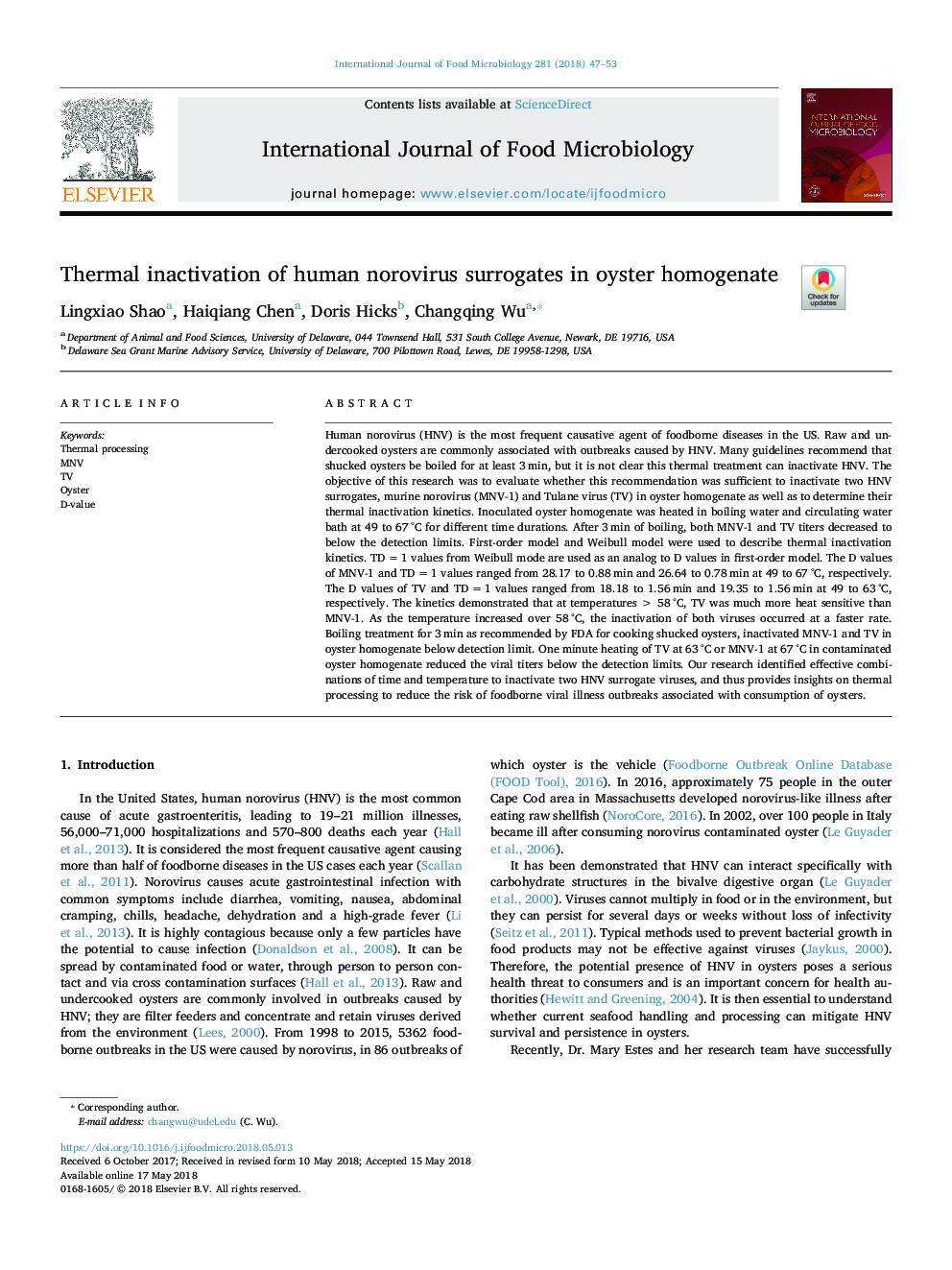| Article ID | Journal | Published Year | Pages | File Type |
|---|---|---|---|---|
| 8844129 | International Journal of Food Microbiology | 2018 | 7 Pages |
Abstract
Human norovirus (HNV) is the most frequent causative agent of foodborne diseases in the US. Raw and undercooked oysters are commonly associated with outbreaks caused by HNV. Many guidelines recommend that shucked oysters be boiled for at least 3â¯min, but it is not clear this thermal treatment can inactivate HNV. The objective of this research was to evaluate whether this recommendation was sufficient to inactivate two HNV surrogates, murine norovirus (MNV-1) and Tulane virus (TV) in oyster homogenate as well as to determine their thermal inactivation kinetics. Inoculated oyster homogenate was heated in boiling water and circulating water bath at 49 to 67â¯Â°C for different time durations. After 3â¯min of boiling, both MNV-1 and TV titers decreased to below the detection limits. First-order model and Weibull model were used to describe thermal inactivation kinetics. TDâ¯=â¯1 values from Weibull mode are used as an analog to D values in first-order model. The D values of MNV-1 and TDâ¯=â¯1 values ranged from 28.17 to 0.88â¯min and 26.64 to 0.78â¯min at 49 to 67â¯Â°C, respectively. The D values of TV and TDâ¯=â¯1 values ranged from 18.18 to 1.56â¯min and 19.35 to 1.56â¯min at 49 to 63â¯Â°C, respectively. The kinetics demonstrated that at temperaturesâ¯>â¯58â¯Â°C, TV was much more heat sensitive than MNV-1. As the temperature increased over 58â¯Â°C, the inactivation of both viruses occurred at a faster rate. Boiling treatment for 3â¯min as recommended by FDA for cooking shucked oysters, inactivated MNV-1 and TV in oyster homogenate below detection limit. One minute heating of TV at 63â¯Â°C or MNV-1 at 67â¯Â°C in contaminated oyster homogenate reduced the viral titers below the detection limits. Our research identified effective combinations of time and temperature to inactivate two HNV surrogate viruses, and thus provides insights on thermal processing to reduce the risk of foodborne viral illness outbreaks associated with consumption of oysters.
Keywords
Related Topics
Life Sciences
Agricultural and Biological Sciences
Food Science
Authors
Lingxiao Shao, Haiqiang Chen, Doris Hicks, Changqing Wu,
